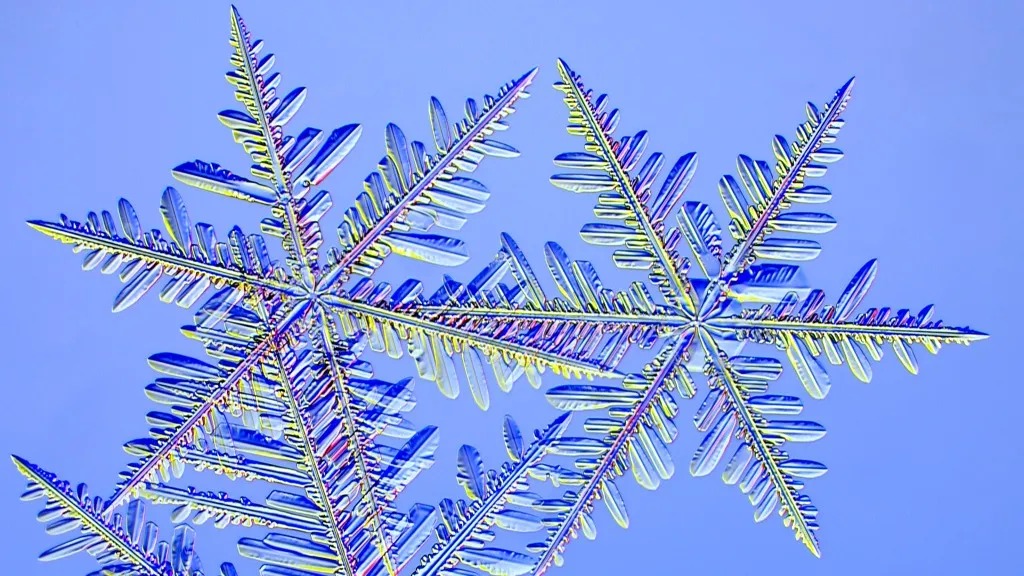
Snowflakes, those delicate and mesmerizing ice formations that grace our winter landscapes, are much more than just frozen water. While we often use the term “snowflake” casually to refer to any icy particle that falls from the sky, the true stars of winter decorations are snow crystals—exquisitely structured ice formations that follow a unique growth pattern influenced by environmental conditions.
The story of the largest reported snowflake takes us back to a fierce winter storm on the night of January 27, 1887. Over the Clark Fork River valley, near Missoula in Montana, USA, snowflakes described as “larger than milk pans” descended. Guinness World Records reports that these colossal snowflakes were purportedly up to 1 ft 3 in (38 cm) wide and 8 in (20 cm) thick. However, the distinction between snowflakes and snow crystals becomes crucial here, as these giant flakes may have been conglomerates of multiple snow crystals pressed together.

Image credit: Kichigin / Shutterstock.com
Professor of Physics at Caltech, Dr. Kenneth Libbrecht, has dedicated over two decades to unraveling the mysteries of snow crystals. He acknowledges the challenge of understanding why snow crystals take on different shapes, emphasizing that the scientific community has long grappled with this phenomenon. Libbrecht’s work includes developing a model that explains how various temperatures give rise to distinct crystalline structures.
In his pursuit of knowledge, Libbrecht addressed the age-old question: “Are no two snowflakes alike?” By creating what he terms “identical twin” crystals in a laboratory setting, he added a unique dimension to his research. One of his remarkable observations in the wild earned him the record for the largest individual snow crystal—a colossal specimen measuring 10 millimeters (0.39 inches) from tip to tip. Considering that the typical stellar dendrite, a common snow crystal type, ranges from 2 to 4 millimeters in diameter, this finding is truly extraordinary.

Snow crystal enthusiasts, akin to birdwatchers, engage in observing these intricate formations to identify various crystalline structures. For those aspiring to embark on their own snow crystal adventure, Libbrecht offers some valuable tips:
- Dress appropriately: Wear warm clothing with a dark sleeve to provide a backdrop for the snow crystal to land on.
- Magnify your view: Carry a 5X magnifier, which is affordable and essential for detailed observations.
- Educate yourself: Familiarize yourself with different snowflakes by using resources like Libbrecht’s “field guide to snowflakes” or exploring photographs and videos on his website.
Armed with these insights and a bit of patience, winter enthusiasts can delve into the captivating world of snow crystals, unlocking the secrets of their unique and breathtaking beauty.

Leave a Reply